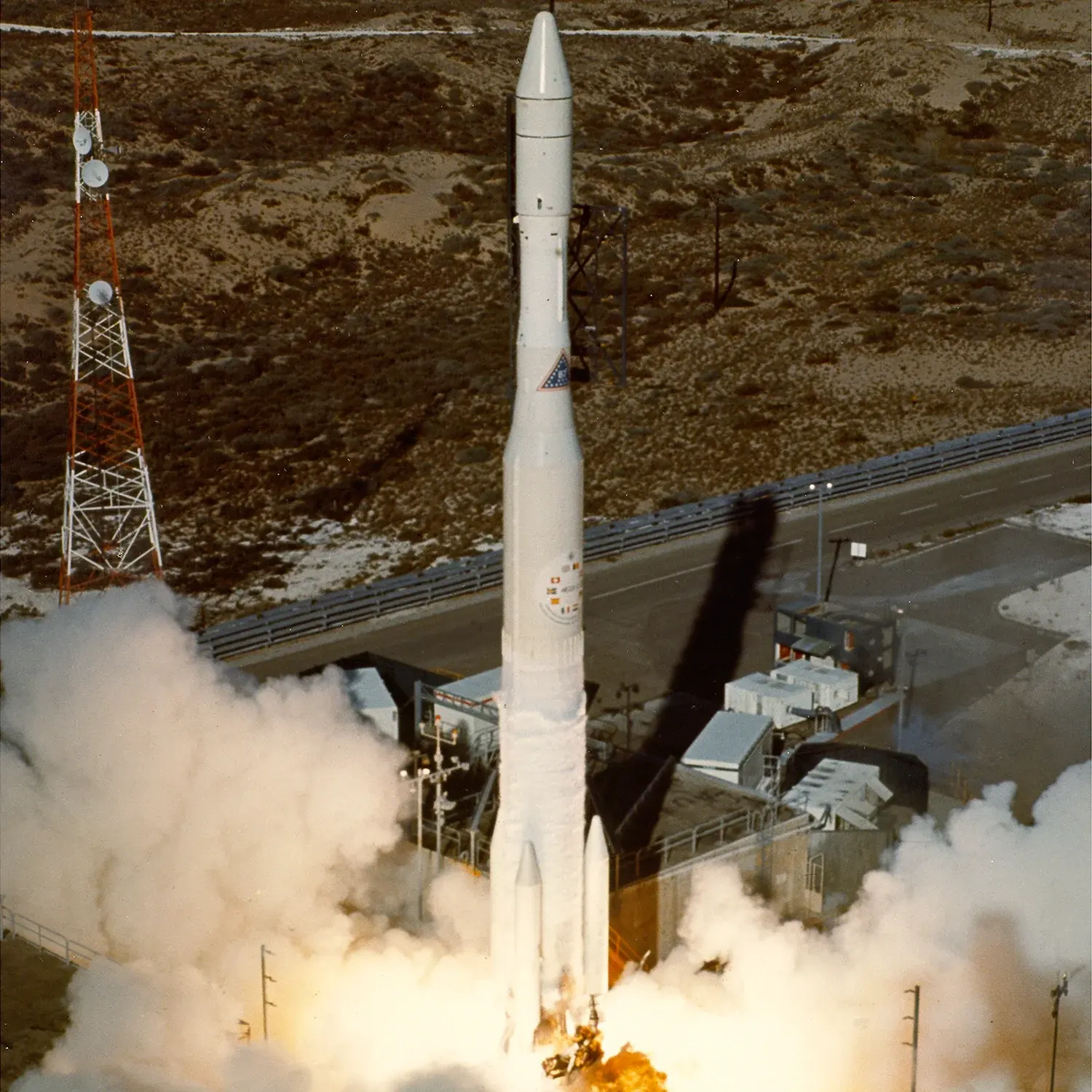Explorer 36 (GEOS 2)
Launch Success
Liftoff Time (GMT)
16:16:00
Thursday January 11, 1968
Mission Details
GEOS 2 (Explorer 36)
The GEOS 2 (Geodetic Earth Orbiting Satellite) was a gravity-gradient-stabilized, solar-cell-powered spacecraft that carried electronic and geodetic instrumentation. The geodetic instrumentation systems included four optical beacons, two C-band radar transponders, a passive radar reflector, a sequential collation of range radio range transponder, a Goddard range and range rate transponder, laser reflectors, and Doppler beacons. Non-geodetic systems included a laser detector and a Minitrack interferometer beacon. The objectives of the spacecraft were to optimize optical station visibility periods and to provide complementary data for inclination-dependent terms established by the Explorer 29 (GEOS 1) gravimetric studies. The spacecraft was placed into a retrograde orbit to accomplish these objectives. Operational problems occurred in the main power system, optical beacon flash system, and the spacecraft clock, and adjustments in scheduling resulted in nominal operations.
Low Earth Orbit
1 Payload
469 kilograms
Rocket

Launch Site
Stats
Delta E
17th
Mission
1st
Mission of 1968
1968
2nd
Orbital launch attempt
